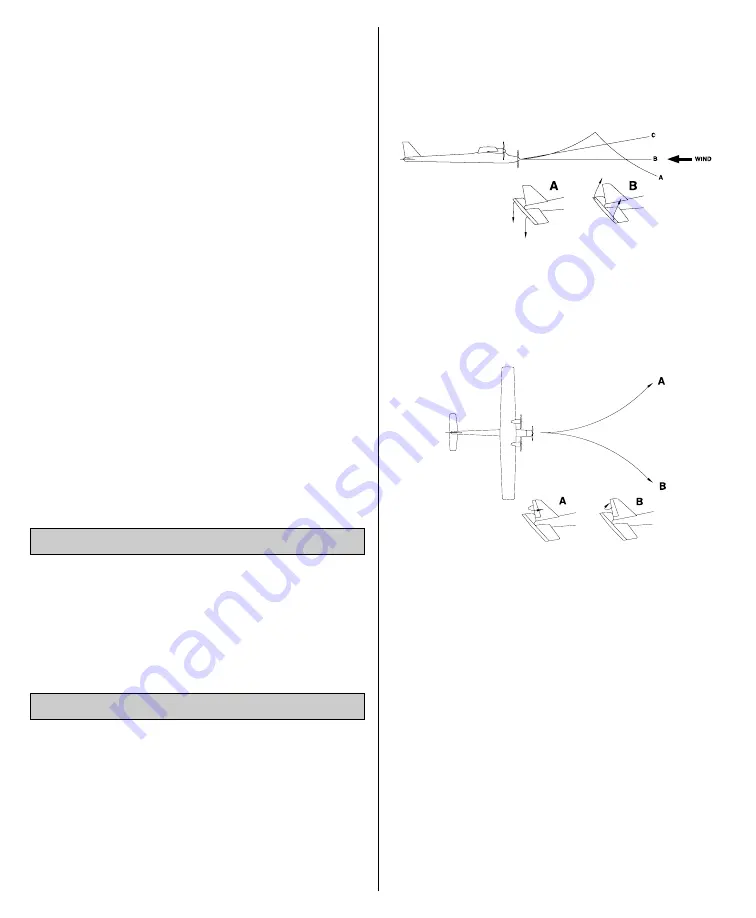
2. For your first few flights, fly only when the wind is
calm. After you are comfortable with the airplane, you
can fly in winds that are no more than 10 miles per
hour. If flown in stronger winds, the plane may be
blown down wind and not have enough power to get
back to you.
3. Make sure the battery pack is fully charged and that
the transmitter has fresh “AA” batteries installed.
4. If others are flying in the same area, make sure that
they are not using the same channel radio system you
are. The front of your transmitter has a tag with a
number on it (for example 27.145). This is the channel
frequency you are using. If someone is on the same
frequency, DO NOT switch on your transmitter until
they are done flying.
5. Range check your radio before each flight. Switch on
the transmitter and plug the battery pack into the Sky
Trick. Have a helper hold the airplane. With the antenna
collapsed, walk 50 feet away from the airplane. Move
both control sticks, checking that the motors run and
turn off following the control stick movement. If you still
have control over the airplane, it is safe to extend the
antenna and fly the airplane. If you do not have control
of the plane, make sure the batteries in the transmitter
are fresh and the battery in the plane is charged. Also,
make sure the wire antenna is extending out the back of
the plane.
If you have never flown an R/C airplane before, we
recommend that you get help from an experienced R/C
pilot. Most R/C clubs have training programs that will
help you learn to fly quickly. If you cannot find an
experienced pilot to help you learn, the following will
help you get your airplane into the air.
1. First, turn your transmitter power switch “ON.” This
immediately puts you in control.
2. Plug the battery pack into the plug in the fuselage.
Caution: Stay clear of the propellers. Reinstall the
battery cover.
3. Have an assistant toss the plane, level, into the wind.
Move the left stick (throttle) forward to start the motors
and then quickly release the stick. Do this two or three
times and notice if the plane starts to climb steeply,
climbs shallow or flies level when the throttle stick is
moved forward.
4. If the Sky Trick climbs steeply, (A) release the left stick
and allow the plane to glide in for a landing. Move the
elevator down 1/32". If the plane flies level, (B) move
the elevator up 1/32". Repeat steps 4 and 5 until the
plane climbs at a shallow angle (C) (10 to 15 degrees).
5. Again, have an assistant toss the plane, level, into the
wind. With the motors off, check that the plane flies
straight. If it does not, adjust the rudder slightly, no more
than 1/32". Continue hand launching the plane until it
flies straight.
6. Once the Sky Trick is trimmed so that it climbs
properly and glides straight, it is time to fly.
7. Again, have an assistant help with the launch. Move
the throttle stick forward so that all three motors are
running. Have your assistant launch the plane into
the wind.
8. Allow the airplane to climb at a 10° to 15° angle for
a few seconds before turning it. This will allow the plane
to gain altitude and air speed.
9. To turn the Sky Trick, quickly move the right stick left
or right and release it. Do this several times in a row
CHECK THE ELEVATOR TRIM
FLYING THE SKY TRICK
9






























